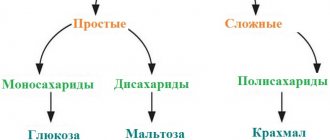Share:
Intermittent or periodic fasting is not like any of the usual diets. Strictly speaking, this is not even a diet in the usual sense of the word. Rather, it is an eating pattern in which you alternate between hours of fasting and eating.
There are no prohibited or permitted dishes or calorie restrictions. Many of us, without knowing it, adhere to just such a nutritional system: for example, the interval between dinner and the first breakfast after sleep can be called fasting.
Taking into account the average daily routine (dinner at 20-00 and breakfast at 8-00), we get a ratio of 12/12. And this is one of the nutrition schemes that we will talk about later.
What is this power system?
This type of fasting is called intermittent, cyclical, intermittent or interval fasting.
Often, names such as fasting, Intermittent Fasting diet, as well as the abbreviations IG, PG and CG are used to designate it. It’s worth noting right away that intermittent fasting has nothing to do with the therapeutic type that is used in alternative medicine. Thanks to the work of biologist Ohsumi, intermittent fasting has recently gained enormous popularity. It is used to prolong youth and get rid of chronic diseases. Bodybuilders actively use this nutritional method to control weight and build muscle. In the field of nutrition, fasting is considered one of the ways to combat excess weight.
Intermittent fasting is the introduction into the usual diet of periods with strict restrictions on food intake, during which you can only drink water. Intervals can have different durations in time - from 12 to 36 hours.
Example.
During the day you can only eat within 8 hours. During this period, you need to fit in all meals. Typically, a three-meals-a-day scheme is used for this:
- 8:00 – breakfast;
- 12:00 – lunch;
- 16:00 – dinner.
During the remaining 16 hours (the period from 16:00 to 8:00) you can only drink water.
There are many intermittent fasting plans. Besides the 16:8 example above, there are also 20:4, 14:10 and others. Moreover, you can eat this way for either a week or 2-3 days. The choice of regimen and duration of intermittent fasting are determined individually, taking into account contraindications, personal preferences, daily routine, work schedule and other factors.
Dry fasting
A more severe method is dry fasting , that is, abstaining not only from food, but also from any liquid.
If you practice daily dry fasting, then in the end it will turn out to be longer, since you need to stop consuming liquid in the evening, and start in the morning of the day following the day of fasting. That is, the person will end up abstaining from water for about 36 hours. And this can provoke unpleasant sensations.
Dry fasting is a more serious challenge, so unprepared people are better off starting with a regular water fast.
Scientific research
Biologist Ohsumi was not the first to talk about intermittent fasting. Even the great Hippocrates (1st century BC) spoke about the benefits of periodic abstinence from eating in his writings.
Interesting fact: “If the body is not cleansed, then the more you nourish it, the more you will harm it!” - Hippocrates said so.
The rapid growth of interest in intermittent fasting arose at the end of the 20th century.
At this time, numerous studies were carried out, various experiments were carried out, and all kinds of hypotheses were put forward. The discovery of biologist Osumi gave a new impetus to the development of intermittent fasting. Osumi's scientific work
A Japanese biologist studied the effects of intermittent fasting on mice. He arranged “food windows” for rodents and carefully monitored the processes that took place in their bodies on a given diet. The experiments continued over many years, which can confirm the accuracy and stability of the results obtained. Mice that periodically fasted were less sick, lived longer and felt better than their counterparts on a regular diet. Both groups of rodents received exclusively high-quality food, taking into account their natural daily intake.
Osumi's main goal was to study and scientifically explain the effect that was observed during an experiment on mice. By tracking changes in physiological processes at the cellular level, he identified and proved a certain pattern: periodic fasting activated autophagy. That is, the process of self-destruction of incapacitated or damaged cell elements (ribosomes, mitochondria, lysosomes) and the process of replacing them with new ones. The study determined that during fasting, the level of the hormone glucagon increases, which triggers autophagy.
However, the question arises as to why therapeutic fasting is universally rejected by official medicine. After all, long-term abstinence from food allows you to increase the level of glucagon and, accordingly, completely renew the body’s cells in just 7–10 days. Ohsumi's work provides a clear answer to this. The Japanese biologist explained that autophagy requires that the level of the hormone always remain at a low level and increase only in short periods of time, that is, the same time when a person is starving.
Other studies on PG
A study of intermittent fasting on mice was also carried out by the Russian biologist V. G. Saraev, who is a professor and teacher at a Moscow university. During the experiments, he established the following changes in the body during abstinence from eating:
- increase in the amount of bioactive metabolites;
- acceleration of metabolic processes;
- activation of tissue growth;
- rapid healing of wounds and other injuries;
- strengthening immunity.
However, it was also determined that as the interval between fasts increases, the effect they create decreases.
Another study of intermittent fasting was conducted by American scientists from Brigham Young University. During the experiments, biologists complicated the nutritional pattern by significantly reducing the number of calories consumed during the “eating window” period. As a result, the autophagy process was activated faster.
However, doctors have mixed opinions about the benefits of intermittent fasting. And the main stumbling block is the lack of reliable data in the field of research into the effect of GHGs on the human body. All experiments were carried out on mice. This means that the conclusions obtained apply only to them. Although the biorhythms and physiological functions of rodents are similar to ours, they have a number of significant differences.
Bodymaster.ru recommends Training Plans:
Intermittent fasting is also called fasting, the scheme is based on the principles:
- dividing the day into two stages - eating and fasting;
- at the first stage it is necessary to set the caloric intake of the diet at the selected time;
- on the second - refuse to eat. You are allowed to drink water, coffee, tea without added sugar, milk, cream and sweeteners. The goal is to prevent a spike in blood sugar levels.
Intermittent fasting is practiced in several time frames - 16/8 and 18/6. These schemes are considered the most popular. Eating lasts 8 or 6 hours, and 16 and 18 hours - refusal of food. There is no discomfort at the second stage, because During the day you don’t have to limit your food intake (while staying within your daily calorie intake), and the hours of asceticism fall mostly during sleep.
Systematic intermittent fasting for weight loss triggers a number of processes in the body:
- During the “fast” period, the body uses adipose tissue as a source of energy. The fat layer is broken down, and muscle tissue remains safe, because the diet does not imply a reduction in protein;
- The production of growth hormone increases during sleep. In tandem with autophagy (the elimination of cell components that have served their functions), cellular renewal, rejuvenation and general healing occur;
- blood sugar levels are normalized, so intermittent fasting is suitable for women and men with type II diabetes;
- the functioning of the gastrointestinal tract and intestinal microflora are stabilized.
The menu is formed in accordance with individual preferences. The main thing is to make a correct calculation of the daily calorie requirement for weight loss and not to go beyond the limits of the data obtained. To improve your body quality, it is recommended to eat a healthy diet and include home workouts or gym sessions.
Scientists' opinion
Scientists are studying intermittent fasting in the context of microbiology, human physiology, etc. Experiments are being carried out on animals: newborn rat pups were fed according to the principles of fasting. Life expectancy on IG is 83% higher than in the control group with a normal diet. Aging has slowed down by almost 2 times.
Scientific conclusion: periodic abstinence from food reduces ribosome activity, allowing recovery. Thanks to improved energy metabolism in cells, the onset of age-related changes slows down and life expectancy increases.
Myths
Misconceptions surrounding meal spacing give rise to myths and fears. However, scientists dispel mistrust time after time:
- slowdown of metabolism - intermittent fasting increases metabolism by 3-6%, but subject to strict adherence to the 16/8, 18/6 scheme or 2-3 days of fasting for 24 hours a week;
- Breakfast is the main meal that should not be skipped - there is no scientific research on the importance of breakfast for health. The first meal you eat is not related to the speed of weight loss;
- exacerbation of gastritis during prolonged hunger - scientists have proven that frequent meals increase the production of gastric juice, and PG regulates the process;
- muscle loss when losing weight during intermittent fasting – partial loss of muscle fibers is typical for any diet. However, it has been proven that with fasting the percentage of loss is less than in the case of a classic diet with a calorie deficit.
Advantages and Benefits of Intermittent Fasting
In addition to effective weight loss, PG provides:
- increase in the amount of growth hormone during the fasting phase by 5 times;
- reduction of oxidative stress, which provokes aging and the development of chronic diseases;
- losing extra pounds and maintaining muscle tissue;
- decreased insulin levels and improved sensitivity to the hormone. Has a beneficial effect on the regulation and transportation of energy reserves in the body;
- the “hungry” phase restores cells by activating autophagy (digestion and removal of old, dysfunctional proteins inside the cell);
- gene expression – protection against diseases of the cardiovascular system, oncology;
- an increase in the hormone BDNF, which increases the growth of nerve cells, which is important for the health and performance of the brain;
- reducing the risk of developing Alzheimer's disease;
- stabilization of the hormone ghrelin (appetite control);
- increased regeneration - helps with skin lesions (dermatitis, chronic urticaria).
Contraindications
Despite its many benefits, it should be noted that intermittent fasting is not for everyone:
- with insufficient weight (body mass index less than 18.5);
- psychological instability;
- pregnancy, breastfeeding period.
Intermittent fasting and weight loss
No modern diet can activate the autophagy process. After all, they require regular meals. This leads to constant production of insulin and, accordingly, inhibits the start of this process. But how can intermittent fasting help you lose weight?
A direct relationship between weight loss and autophagy has not been identified. However, self-cleaning of cells normalizes the functioning of the body. If you eat right and exercise, calories stop being stored as fat because they are used to generate the energy needed to maintain life and build muscle.
A normal diet activates a special process in the body - de novo lipogenesis. Its essence is as follows:
Eating → Increasing insulin levels → Storing glucose in the liver and forming fat reserves.
During the period of abstinence from food, the process proceeds differently:
Lack of food → Decrease in insulin levels → Consumption of glucose and burning of fat reserves.
Maintaining a balance between normal nutrition and hunger allows you to stabilize your weight. Based on this, it’s easy to guess how you can lose weight with intermittent fasting: you need to reduce your daily caloric intake and avoid overeating during meals, which will help you burn excess fat reserves more intensively.
The effect of losing weight on intermittent fasting depends on many factors. The main one is the frequency of posts. About two days a week with periods of fasting can help you lose 2-3 kg. If you fast once a week, you can lose up to 3-4 kg in a month. In this case, the individual characteristics of the organism will also play an important role.
Preparing for fasting
Before you start fasting, even such a short one, you need to prepare your body. This will avoid serious complications and improve results:
- We adjust the diet. Three days before unloading, we exclude fried, fatty, flour, carbonated drinks, alcohol and fast food from the menu. During the day we give up coffee, mushrooms, legumes, tea, nuts and dairy products. Vegetables, fruits, and natural juices should remain in the diet at the time of fasting.
- Before fasting, we stop taking medications. We also refuse intense training with heavy loads. It is advisable to temporarily replace them with yoga, breathing and light gymnastic exercises.
- If you are planning water fasting, we begin to enter the program after cleansing the intestines with an enema. If it is dry, this procedure is not required.
- We start fasting early in the morning. In this case, a light breakfast is allowed, consisting of porridge with water, unsweetened fruit or small bread with cheese, etc.
After the preparatory stage has been completed, you can begin fasting according to the chosen method: with or without drinking liquid, various indulgences, etc.
Interesting fact. Before fasting, you should consult your doctor. After the examination, he will give recommendations on the program and tell you how to properly spend a day without food.
How to speed up weight loss on PG without harm to health
When combining a low-calorie menu and intermittent fasting, you need to be careful. This eating pattern can cause an acute feeling of hunger, loss of strength and a deficiency of nutrients necessary for the body. Especially at the initial stage. You can avoid such consequences by adding a balanced breakfast from Herbalife Nutrition to your morning meal on the day of fasting. It can help you stay energetic while maintaining appetite and weight control. A balanced breakfast includes an Aloe drink, which helps cleanse the gastrointestinal tract. Breakfast also includes a low-calorie Formula 1 cocktail with a large amount of proteins, minerals and vitamins, which can cause a long-lasting feeling of fullness and nourish the body with useful substances. Another breakfast product is a herbal drink. It helps to cheer up and stay energetic during periods of fasting.
Intermittent fasting: pros and cons
Behind
Can improve:
- mood;
- muscle relief;
- the quality of life;
- mental capacity;
- cellular processes;
- intensity of weight loss.
Can increase:
- speed of recovery and metabolic processes;
- intensity of oxidative and fat burning reactions;
- production of growth hormone;
- life expectancy.
May reduce:
- insulin level;
- blood sugar;
- amount of cholesterol;
- arterial pressure;
- inflammatory reactions;
- risk of cancer, diabetes and other diseases.
Against
Intermittent fasting often has various side effects. Therefore, before you start eating according to one of the plans, you should definitely consult with a specialist and, if necessary, undergo an examination. It is possible that a particular person will not be able to engage in PG at all. In some cases, periodic abstinence from food provokes the occurrence of irreversible disorders in the functioning of various body systems.
Intermittent fasting will definitely cause harm to the body if contraindications and recommendations for its implementation are not taken into account. Especially at the stage of leaving the post. Overeating after hunger can result in poisoning of the body and other serious disorders.
General information
Short, that is, one-day fasting, was practiced in ancient times.
For example, this was done by Socrates, who believed that food must be seasoned with hunger. Such “treatment” was also practiced by ancient doctors, who were convinced from experience that hunger can be treated. In fact, there is a lot of common sense in this thesis, since modern people are prone to overeating. Short daily fasting is very beneficial for the body. It makes it possible to cleanse it, stimulate the function of the immune system, keep the body in good shape and even cure some diseases. And even if a person fasts one day a week, then with the right approach to this process, such a system will make it possible to obtain a tangible effect. how to properly fast for 1 day, how to recover from fasting , and how to tolerate a 24-hour abstinence from food correctly.
Indications and contraindications for fasting
Indications for PG
Intermittent fasting is indicated in the following cases:
- presence of excess weight and obesity;
- severe slagging of the body;
- increased mental stress;
- the occurrence of a plateau effect;
- high cholesterol;
- regular inflammation;
- hypertension;
- active sports;
- predisposition to cancer, diabetes, Alzheimer's disease.
Contraindications to PG
Relative:
- diabetes;
- taking medications (including oral contraceptives);
- gout, high uric acid levels.
Absolute:
- period of pregnancy and lactation;
- diagnosed oncology;
- tuberculosis and other lung diseases;
- pathologies of the cardiovascular system;
- kidney and liver diseases;
- thyrotoxicosis;
- weight loss, anorexia, exhaustion, rickets; age up to 18 years.
Advantages and disadvantages
The benefits of intermittent fasting
Another advantage of intermittent fasting is that there is no upper age limit. On the contrary, it is often useful for older people, as it can improve well-being, prolong life, slow down the aging process and prevent various diseases.
Disadvantages of intermittent fasting.
This:
- slower muscle growth;
- likelihood of side effects;
- decreased rate of fat burning;
- a large list of contraindications;
- high requirements for self-control;
- increased irritability and nervousness;
- lack of human study data.
Intermittent fasting plans
A nutritional system with periodic abstinence from eating food is selected taking into account individual preferences and work schedule. It can be adjusted based on eating habits and appetite intensity. For example, some people do not have the opportunity to have breakfast, and in the evening they cannot refuse a meal. Based on this, an 8-hour regimen with meals between 12:00 and 20:00 is suitable for them. In a similar way, you can create an individual system, but based on standard recommendations.
Short posts (within 24 hours)
A short period of abstinence from food is usually suitable for beginners. It will allow you to better understand the principles of such nutrition.
16:8 – Leangains, eight-hour circuit, dry weight
A popular variant of intermittent fasting, on the basis of which the above principles were outlined. For 16 hours you need to drink only water. The remaining 8 hours of the day are devoted to main meals. As a rule, they are divided into three times: breakfast (8:00), lunch (12:00) and dinner (16:00). If it is not possible to have breakfast in the morning, you can use other intervals, for example: 12:00, 16:00 and 20:00. This nutrition option can be used every day.
20:4 – Warrior Diet, four-hour regimen
It is more complex than the previous one. Provides for eating only within 4 hours a day. The fasting period increases to 20 hours. With this scheme, food is consumed in two doses: 8:00 and 12:00 or 14:00 and 18:00. This method of intermittent fasting can be done twice a week.
14:10 – ten-hour scheme
It is a gentle option for intermittent fasting. This scheme is suitable for most, especially if there are difficulties with the use of other GHG systems. In this case, 10 hours a day are allocated for food intake - from 8:00 to 18:00. The schedule includes breakfast, lunch, dinner, afternoon tea and dinner at 3 hour intervals.
Prolonged fasting (more than a day)
24 – “to eat – not to eat”, Eat Stop Eat
This scheme involves fasting for 24 hours between meals. That is, after breakfast at 8:00, fasting begins and lasts until the next morning. This regimen can be used up to 2 times a week.
36 – “every other day”, Alternate-day fasting (ADF)
In this case, fasting lasts for 36 hours. For example, after breakfast at 8:00 on one day you need to fast until dinner (20:00) on the next. Another option is dinner at 19:00, then sleep, fasting throughout the day and the next night until breakfast the next morning (7:00).
5:2 – diagram by Dr. Michael Mosley
The author's technique was outlined in the book “Fast Diet”. It involves proper proper nutrition for 5 days and fasting on the weekend (2 days). This scheme allows for some relaxations. For example, during fasting you can consume up to 500 kcal. Food can be eaten in one or more meals. Dr. Michael Mosley's regimen was tested at the University of Florida. The experiment involved 24 people who adhered to the nutritional method for 2.5 months. All participants experienced sustained weight loss, decreased blood cholesterol, slowed down the aging process and strengthened the immune system. However, doctors recommend taking vitamins and minerals with this regimen. Prolonged fasting (more than 48 hours) is considered extreme and is mostly used in alternative medicine. There is no scientific evidence of the effectiveness and benefits of this for the body. Most studies have only been conducted on short-term posts.
Longer periods of fasting
Here you need to start with regular health checks from a specialist. This will help avoid a number of complications and reduce potential risks.
For periods of intermittent fasting longer than 48 hours, special multivitamin complexes are recommended. They compensate for the lack of vitamins and microelements in the body. The world record for fasting is 382 days (but we under no circumstances recommend repeating it!). Healthy people can go without food for 7-14 days with the permission and under the supervision of a doctor.
We advise against fasting for more than 14 days, as this may lead to refeeding syndrome. This is a dangerous redistribution of fluids and minerals that occurs if a person begins to eat food after a long period of fasting.
Recommendations for Intermittent Fasting
How to start correctly
Beginners who decide to try intermittent fasting should adhere to the following recommendations:
- Consult with a specialist and, if there are no contraindications, choose the appropriate regimen.
- Determine the frequency of fasting.
- Decide how many times the fast will be repeated.
- During the process, you need to constantly monitor your well-being and eliminate side effects in a timely manner.
- Do not change habits in other areas of life. Continue to train, study, communicate, relax and work as usual.
- Carefully plan your exit from fasting.
Remember, the right start is half the success!
If you constantly feel hungry, you can drink more water. And not only during the period of “food windows”, but also during the usual diet.
How should fasting proceed?
- It is worth drinking large amounts of water both on regular days and during fasting.
- Constantly keeping yourself busy with something often distracts you from thoughts about hunger.
- If you can’t avoid thinking about food, you can replace water with green tea.
- The feeling of hunger quickly passes. You just have to wait half an hour and it will go away.
- You can ask loved ones and friends for support.
- Try not to draw any conclusions about the results before the 1st month.
- Men should follow a protein diet between fasts, women should follow proper nutrition.
- It is necessary to come out of a hunger strike gradually - do not overeat on the first day after fasting.
You can print this reminder and hang it on your refrigerator. It can help you stay in control and fight hunger.
How not to lose your temper
Hunger attacks are especially dangerous for beginners. Having verified in practice that they appear and disappear in waves, it will be easier to control yourself. You should not think that hunger intensifies with each subsequent hour of fasting, growing like a snowball. You can drink a glass of water, the unpleasant feeling will subside for a few hours. During the adjustment period, you can drink green or any other tea without sugar or additives.
What should be the way out of fasting?
It is equally important to end the fast correctly. At the end of the fast, you need to eat a small portion of healthy foods with a minimum amount of fat. An excellent choice would be a light vegetable salad with low-fat sour cream or vegetable oil.
Features of PG
Intermittent fasting must take into account the gender of the person. Different nutritional principles are used for men and women.
For men.
Representatives of the stronger sex need to increase muscle mass and reduce body fat. This requires high levels of testosterone. It is this hormone that is responsible for rapid metabolism and active fat burning. Its anabolic properties help build muscles, give them elasticity and beautiful relief. There is a way that helps increase testosterone production. The essence of the method is to combine intermittent fasting with intense training. Abstinence from eating food and testosterone levels are closely related. This is why intermittent fasting is actively used in bodybuilding. Athletes build muscle and gradually lose excess fat while maintaining overall weight stability. And for this you do not need to reduce the calorie content of the menu (they add more protein foods to the diet). However, you can’t play with hormones on your own. Remember to consult a specialist.
For women.
Intermittent fasting works differently for women. Training can be carried out as usual, but the diet must be changed. Firstly, you must completely abandon any diets. Secondly, the menu must comply with the principles of proper nutrition. Thirdly, daily calorie intake during the “food window” should not exceed 500–800 kcal. And in this case, preliminary consultation with a specialist is also necessary for contraindications, because a large calorie deficit can negatively affect health.
How to go out correctly
A healthy 24-hour fast lasts a minimum of time, but it is harmful to break it with large meals. The output goes as long as the diet itself. This will help to gently run the intestines and digestive system without causing discomfort.
How to bring your body out of a one-day fast on water:
- In the morning, cleanse: dilute 1 tsp in 1 liter of water. salt and soda. After drinking liquid, induce vomiting.
- After cleansing, work is done on the taste buds: put a few pieces of apple in your mouth, chew slowly and spit out.
- After 30-40 minutes, drink herbal tea, juice from fresh fruits or vegetables. Store-bought drinks are prohibited; they contain a large number of chemical components that are immediately absorbed into the blood and intestines.
- The first day you should not eat heavy food. Help your body gain strength by eating a salad with cabbage and carrots. If you feel a strong feeling of hunger, porridge, kefir or yogurt are allowed. On the second day, slowly return to your normal diet, introducing a new food with each subsequent meal.
By violating the safe exit rule, you can cause an exacerbation of gastrointestinal diseases.
How to properly exit dry fasting for 1 day:
- Start your exit with a drink. In 500 ml. Dilute a small amount of lemon juice with water. Drink slowly.
- After 5 minutes the banana is eaten. The fruit coats the walls of the stomach and neutralizes pancreatic juice.
- After half an hour or an hour, a light breakfast of vegetables is allowed.
The process should occur without sudden disruptions. Entry and exit into a 1-day fast without water and food lasts for 1 day each.











